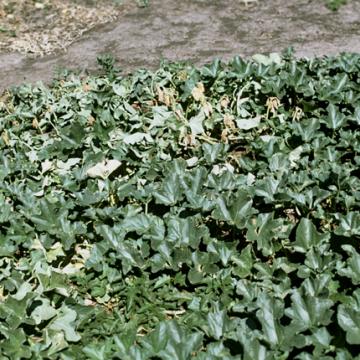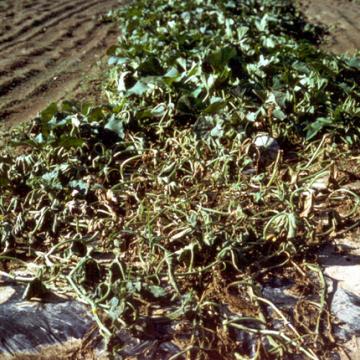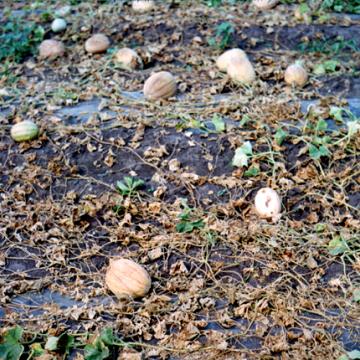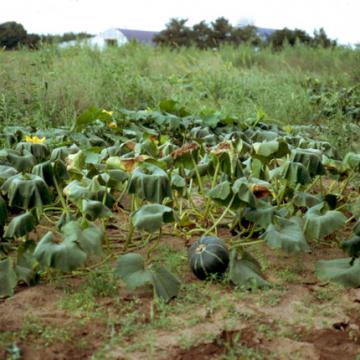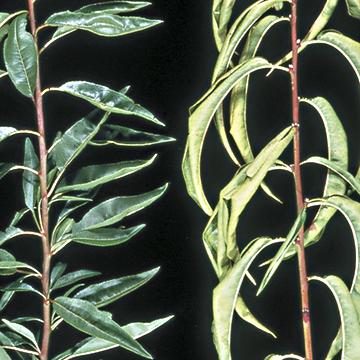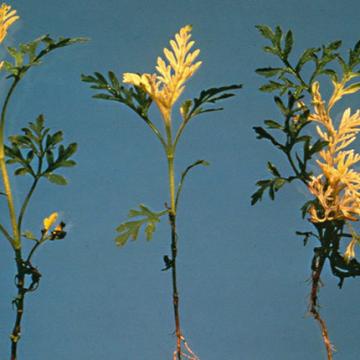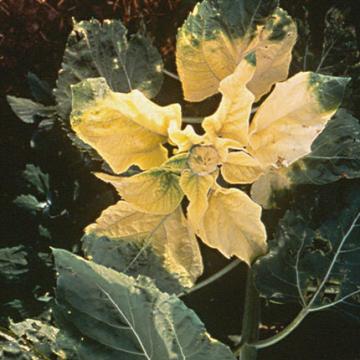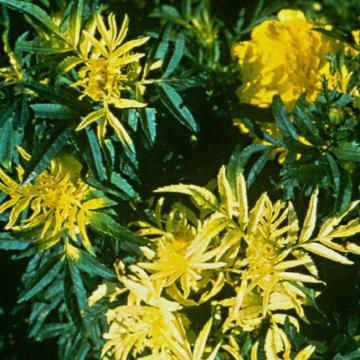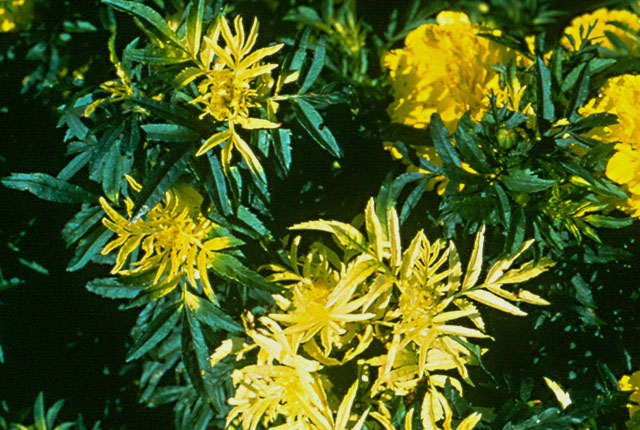DISEASE: Bacterial wilt
HOST: Cantaloupe
Cantaloupe field with severe destruction from bacterial wilt (left), less on right.
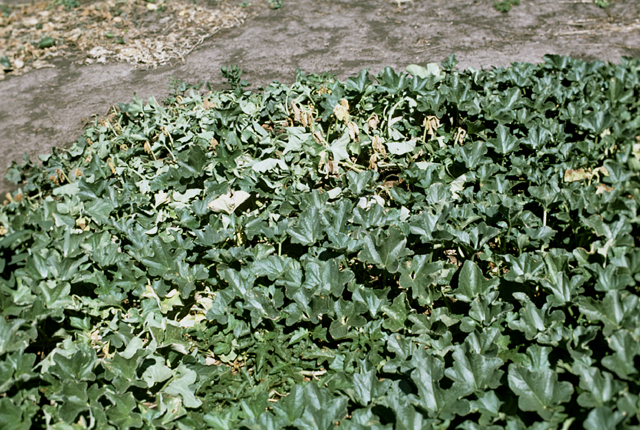
Bacterial wilt | Cantaloupe
DISEASE: Bacterial wilt
HOST: Cantaloupe (Cucumis melo var. cantalupensis)
PATHOGEN: Erwinia tracheiphila
SOURCE: L. Claflin
DISEASE: Bacterial wilt
HOST: Muskmelon
Severely diseased plants as noted by dying runners.
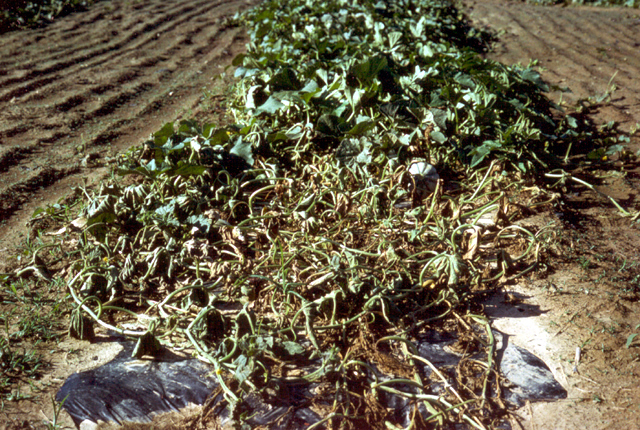
Bacterial wilt | Muskmelon
DISEASE: Bacterial wilt
HOST: Muskmelon (Cucumis melo)
PATHOGEN: Erwinia tracheiphila
SOURCE: M. Shurtleff
DISEASE: Bacterial wilt
HOST: Muskmelon
Wilt-devastated muskmelon field.
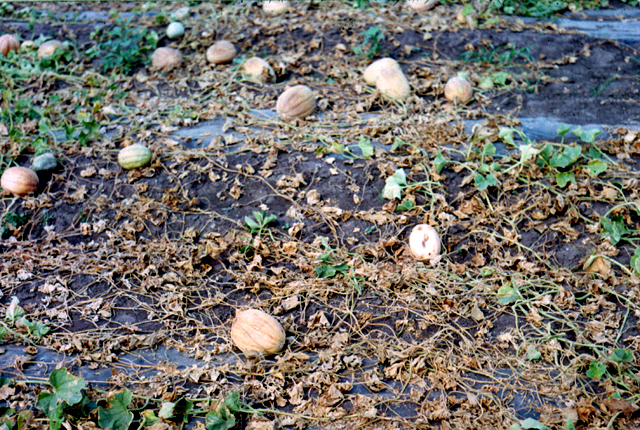
Bacterial wilt | Muskmelon
DISEASE: Bacterial wilt
HOST: Muskmelon (Cucumis melo)
PATHOGEN: Erwinia tracheiphila
SOURCE: M. Shurtleff
DISEASE: Bacterial wilt
HOST: Squash
Field with severe symptoms of wilt. Foliage often is chlorotic and leaf margins may be chlorotic and necrotic before plant death. Bacterial ooze may be seen streaming from the xylem when infected stems are cut.
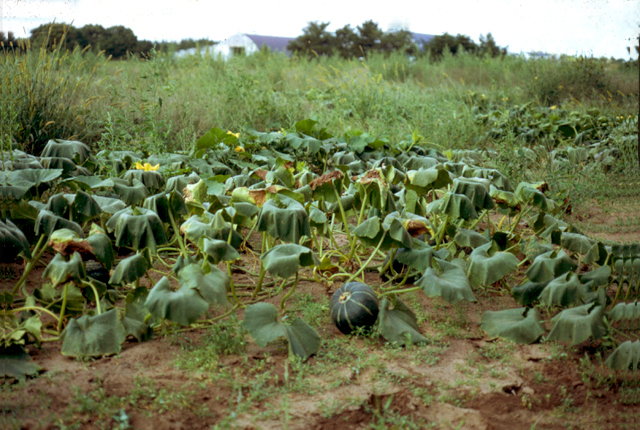
Bacterial wilt | Squash
DISEASE: Bacterial wilt
HOST: Squash (Cucurbita maxima)
PATHOGEN: Erwinia tracheiphila
SOURCE: B. Jacobsen, M. Shurtleff
DISEASE: European stone fruit yellows
HOST: Almond
The disease causes yellowing and rolling of leaves (right). Leaves become thick and rough in texture. Healthy leaves (left).
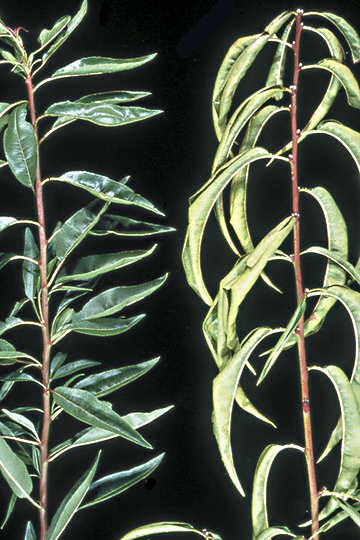
European stone fruit yellows | Almond
DISEASE: European stone fruit yellows
HOST: Almond (Prunus dulcis)
PATHOGEN: 'Candidatus Phytoplasma prunorum'
PATHOGEN SYNONYM: Phytoplasma Apple proliferation group
SOURCE: E. Seemueller
DISEASE: Pseudomonas leaf spot
HOST: Marigold
Marigolds with yellow apical chlorosis attributed to toxin production by the pathogen.
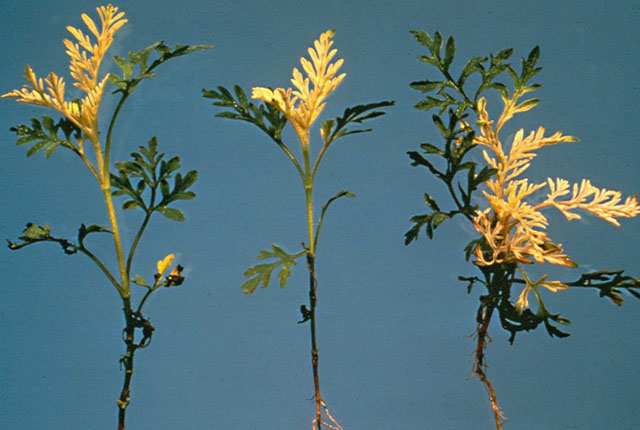
Pseudomonas leaf spot | Marigold
DISEASE: Pseudomonas leaf spot
HOST: Marigold (Tagetes erecta)
PATHOGEN: Pseudomonas syringae pv. tagetis
SOURCE: R. Durbin
DISEASE: Pseudomonas leaf spot
HOST: Marigold
Chlorotic leaves with total loss of chlorophyll. Disease is also known as toxic chlorosis.
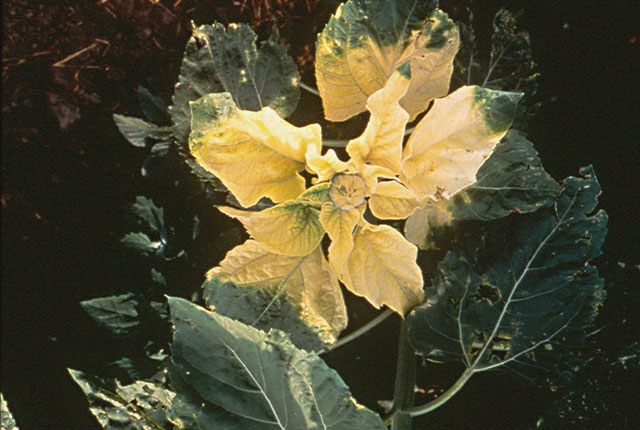
Pseudomonas leaf spot | Marigold
DISEASE: Pseudomonas leaf spot
HOST: Marigold (Tagetes erecta)
PATHOGEN: Pseudomonas syringae pv. tagetis
SOURCE: R. Durbin


